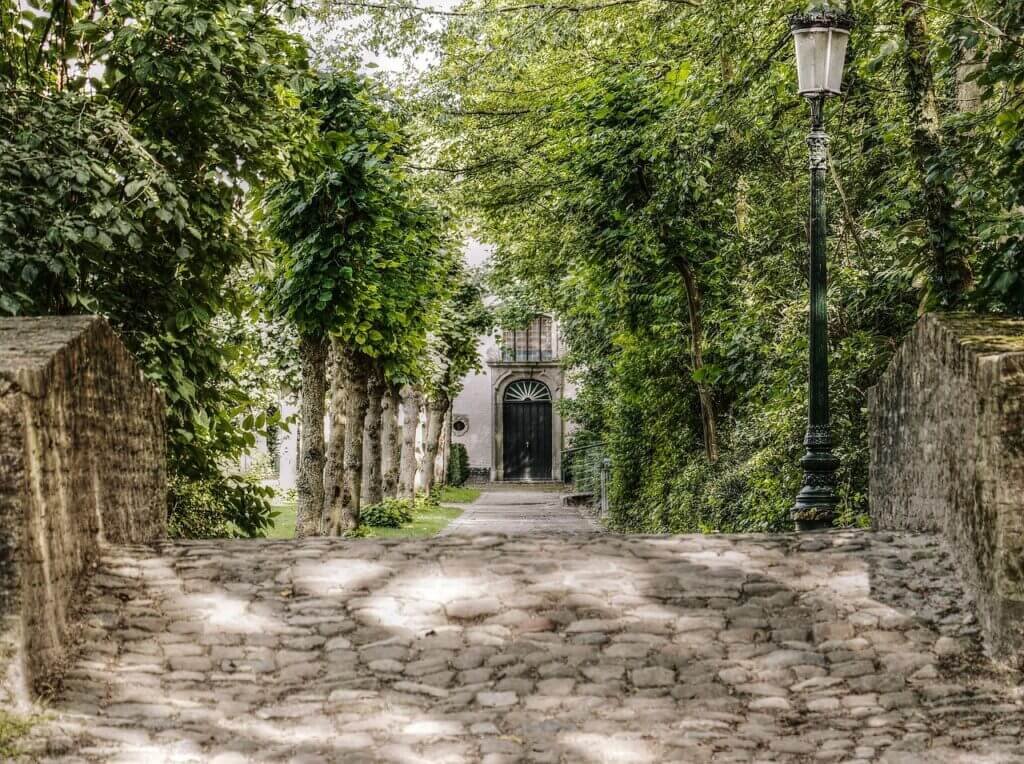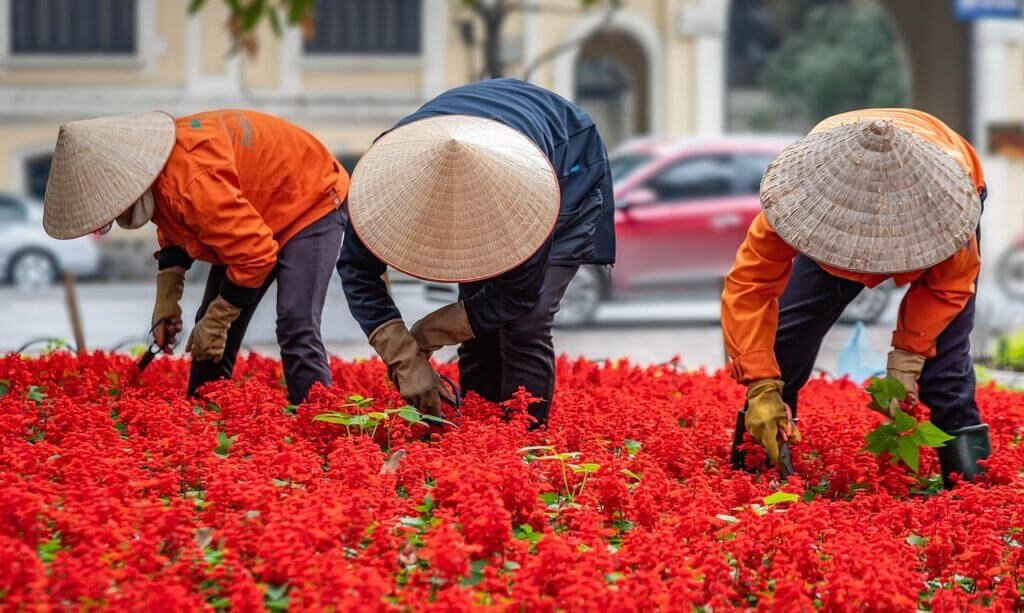Indoor gardening in a city apartment can be a rewarding and fulfilling experience, but it does come with its own set of considerations. From finding the right plants that thrive in limited sunlight and space, to understanding the importance of proper watering and ventilation, there are several factors to take into account. Whether you’re a seasoned gardening enthusiast or a beginner looking to bring some greenery into your urban oasis, this article will guide you through the essential considerations for successfully cultivating an indoor garden in your city apartment.

Lighting
Natural light
When it comes to indoor gardening, lighting is one of the most important factors to consider. Natural light, especially sunlight, is the best source of light for your plants. If you are lucky enough to have windows in your city apartment that receive direct sunlight for several hours a day, you could take advantage of this by positioning your plants near these windows. South-facing windows generally receive the most sunlight, while east-facing and west-facing windows receive moderate levels of light. However, it’s important to keep in mind that the intensity and duration of natural light can vary depending on the time of year and the specific location of your apartment.
Artificial lighting
If your city apartment lacks sufficient natural light, or if you want to supplement the available light, artificial lighting can be a great solution. LED grow lights are popular choices for indoor gardeners because they provide the necessary light spectrum for plant growth and are energy-efficient. When choosing artificial lighting, it’s important to consider the specific light requirements of the plants you want to grow, as different plants have different needs. Position the lights above your plants at the recommended distance to ensure they receive optimal light intensity without burning or scorching the leaves.
Space
Assessing available space
Before starting your indoor garden, it is crucial to evaluate the space you have available. Determine how much floor space, shelf space, or wall space you can dedicate to your plants. This assessment will help you decide the number and size of containers you can accommodate, as well as the types of plants you can grow. Don’t forget to take into account other items in your apartment, such as furniture or decorations, that may limit your available space.
Vertical gardening
In a city apartment where space is limited, vertical gardening is a smart solution to maximize your growing area. Vertical gardening involves growing plants on walls, trellises, or hanging structures. This technique allows you to make use of vertical spaces that would otherwise go unused. You can opt for planters with built-in vertical support, or create your own DIY vertical garden using hooks, racks, or hanging baskets. By going vertical, you can grow a larger variety of plants and add a lush green touch to your apartment without taking up precious floor space.
Utilizing windowsills
Windowsills are often an overlooked space that can be utilized for indoor gardening. If you have windowsills in your city apartment, consider placing smaller plants or herbs there. Windowsills provide proximity to natural light and are a great way to grow herbs for cooking or small plants that require less space. Just ensure that your plants won’t block the natural light from entering your apartment and that they won’t obstruct your view from the window.
Balcony or rooftop gardening
If you are fortunate enough to have a balcony or rooftop access, you can even create an outdoor-indoor gardening oasis. Utilize these spaces to grow larger plants or even create a small garden bed. Balcony or rooftop gardening allows your plants to receive ample sunlight and fresh air, which can greatly benefit their growth. However, make sure to account for the specific temperature and environmental conditions of your balcony or rooftop, as they can differ from the indoor areas of your apartment.

Temperature and Humidity
Temperature requirements
Plants have specific temperature requirements for optimal growth. Most houseplants thrive in temperatures between 60 to 75 degrees Fahrenheit (15 to 24 degrees Celsius). However, it’s essential to check the specific temperature preferences of the plants you choose to grow. Keep in mind that city apartments can have temperature fluctuations due to heating and cooling systems, so it’s important to position your plants away from vents or radiators that could expose them to extreme temperatures. Monitoring the indoor temperature and ensuring it remains within the ideal range will contribute to the health and vitality of your plants.
Humidity requirements
Indoor environments, especially in city apartments, tend to have lower humidity levels than plants typically prefer. Most houseplants thrive in humidity levels around 40% to 60%. To increase humidity, you can place a tray of water near your plants or use a humidifier to create a more suitable environment. Grouping your plants together can also help create a mini microclimate of higher humidity. Additionally, avoid placing your plants near drafts or heating vents that can cause moisture loss. Regular misting can also provide a boost of humidity for plants that particularly appreciate it.
Air Circulation
Importance of air circulation
Good air circulation is vital for indoor gardening because it helps prevent the build-up of stagnant air, reduces the risk of pests and diseases, and promotes healthy plant growth. In a city apartment where there may be limited natural air movement, it’s essential to create proper air circulation. Stagnant air can lead to mold, fungal diseases, and poor plant growth. It’s important to provide your plants with fresh air to aid in respiration and transpiration. This can be achieved by opening windows and doors when weather permits, using fans to promote air movement, or circulating air through proper ventilation systems.
Fans and ventilation
In a city apartment where natural air circulation may be limited, using fans or ventilation systems can greatly enhance air movement for your indoor plants. Positioning a fan in the room where your plants are located helps recreate a gentle breeze, which not only aids in air circulation but also strengthens plant stems and promotes healthier growth. Additionally, having proper ventilation in your apartment, such as exhaust fans in kitchens and bathrooms, can significantly contribute to improving the overall air quality and reducing the risk of fungal diseases.

Watering and Drainage
Choosing the right watering method
Proper watering is crucial for the health and survival of your plants. Different plants have different watering needs, so it’s important to understand the specific requirements of each plant you choose to grow. Some plants prefer consistently moist soil, while others prefer a drier soil before watering again. It’s best to water your plants thoroughly and ensure that the excess water drains properly to avoid waterlogging, which can lead to root rot. Use methods like bottom watering or watering from the top until water flows out of the drainage holes to make sure the entire root system is adequately hydrated.
Providing proper drainage
Drainage is equally important as watering when it comes to indoor gardening. Without proper drainage, excess water can accumulate at the bottom of your containers, causing root rot and other water-related issues. Ensure that your containers have drainage holes to allow excess water to escape and prevent water from becoming stagnant. Additionally, having a saucer or tray underneath your containers to catch excess water is a good practice to protect your surfaces and prevent water damage. Remember to regularly check the drainage holes and clean them if they become clogged with soil or debris.
Choosing Suitable Plants
Considering light requirements
When selecting plants for your indoor garden, it’s crucial to consider their light requirements. Some plants thrive in low-light conditions, while others require bright, direct sunlight. Assess the lighting conditions in your city apartment and choose plants that can adapt to those conditions. If you have limited natural light, opt for shade-tolerant plants like pothos, snake plants, or zz plants. On the other hand, if you have ample natural light, consider sun-loving plants like succulents, herbs, or flowering plants. Matching your plants’ light requirements with your available light will help ensure their overall health and success.
Determining space requirements
Every plant has different space requirements, including height, width, and root depth. Consider the available space in your city apartment and choose plants that fit well within those constraints. If you’re limited on floor space, focus on compact or trailing plants that won’t overwhelm your living area. Vertical gardening can also be a great way to grow more plants in a smaller footprint. Additionally, consider the potential growth of your chosen plants and whether they will outgrow their containers over time. Be prepared to repot or prune your plants to ensure they have enough space for healthy growth.
Considering maintenance level
The level of maintenance your indoor garden requires is an important consideration, especially for busy city dwellers. Some plants require more care and attention than others, so choose plants that align with your lifestyle and schedule. If you’re a newbie or have limited time for plant care, opt for low-maintenance plants that are more forgiving and can withstand occasional neglect. On the other hand, if you enjoy the hands-on aspect of gardening and have the time and dedication to care for high-maintenance plants, go ahead and choose plants that require more pampering.
Choosing edible plants
One of the joys of indoor gardening is being able to grow your own food, even in a city apartment. Consider adding edible plants to your indoor garden to enhance your culinary experience. Herbs like basil, mint, rosemary, and thyme are popular choices for indoor gardens and can add fresh flavors to your cooking. Cherry tomatoes, peppers, and microgreens are also great options if you have enough light and space. Growing your own food not only provides a sense of satisfaction but also reduces your carbon footprint by eliminating the need for store-bought produce.
Container Selection
Choosing the right type of container
When it comes to container selection, it’s important to consider the specific needs of your plants. Different plants require different container sizes and materials. Plastic containers are lightweight and retain moisture well, making them suitable for moisture-loving plants. Ceramic or terracotta containers are heavier but provide better breathability for plants that prefer drier conditions. Hanging baskets are perfect for trailing or cascading plants, while deeper pots are better for plants with larger root systems. Assess the needs of your plants and choose containers that accommodate their growth and provide adequate drainage.
Considering drainage
Proper drainage is crucial for the health of your plants, so it’s important to select containers that have drainage holes. Without drainage, excess water can accumulate and lead to root rot, which can be detrimental to plant health. When choosing containers, ensure they have sufficient drainage holes that allow excess water to escape. It’s also a good practice to place a layer of rocks or gravel at the bottom of the container to further aid in drainage. Another option is to use self-watering containers that have built-in reservoirs, which can help maintain moisture levels without risking waterlogging.
Optimizing space with vertical or hanging containers
In a city apartment where space is a premium, optimizing every inch of available space becomes crucial. Vertical or hanging containers are a great way to save space while adding a touch of greenery to your indoor environment. Vertical planters can be easily mounted on walls or hung from ceilings, allowing you to grow plants vertically. Hanging planters are perfect for trailing or vining plants, as they take advantage of vertical space and prevent plants from cluttering surfaces or floor space. By utilizing these space-saving container options, you can expand your indoor garden without sacrificing valuable living space.
Soil and Fertilizers
Selecting the appropriate soil
Choosing the right soil is essential for the overall health and growth of your plants. Indoor plants generally thrive in well-draining soil that retains moisture without becoming waterlogged. Potting mixes that are formulated specifically for indoor plants work well in most situations. These mixes usually contain a combination of organic matter, such as peat moss or coconut coir, and inorganic components like perlite or vermiculite to promote drainage. Avoid using garden soil or topsoil as they tend to be too heavy and can compact over time, suffocating the roots and preventing proper water and nutrient uptake.
Using organic fertilizers
Proper fertilization is crucial for supplying essential nutrients to your indoor plants. Organic fertilizers are often preferred for indoor gardening because they provide a slow-release source of nutrients and are less likely to burn or damage plants. Organic fertilizers derived from natural sources like compost, worm castings, or fish emulsion are excellent choices. They not only provide the necessary nutrients but also improve soil health and promote beneficial microbial activity. Remember to follow the instructions on the fertilizer package and avoid over-fertilization, as it can lead to nutrient imbalances and damage your plants.
Pest Control
Preventing pests
Prevention is key when it comes to pest control in indoor gardening. To minimize the risk of pests infesting your plants, maintain good hygiene and cleanliness in your apartment. Regularly remove fallen leaves, debris, and dead plant material from your pots to discourage pests from finding a home in your indoor garden. Inspect any new plants or cuttings before introducing them to your existing collection to avoid introducing pests. Additionally, avoid overwatering your plants, as damp conditions can attract pests like fungus gnats and spider mites.
Natural pest control methods
If pests do find their way into your indoor garden, there are several natural pest control methods you can use to protect your plants. Neem oil, derived from the neem tree, is a popular organic insecticide that is effective against a wide range of pests without harming beneficial insects. It can be mixed with water and sprayed on affected plants, providing a safe and natural solution. Another effective natural remedy is using insecticidal soap, which suffocates soft-bodied pests like aphids and mealybugs. Regularly inspecting your plants and promptly addressing any pest issues can help keep your indoor garden happy and pest-free.
Maintenance and Care
Regular watering and fertilizing
Consistency in watering and fertilizing is essential for the health and vitality of your indoor garden. Establish a regular watering schedule based on the specific needs of your plants and the moisture requirements of their respective potting mixes. Avoid underwatering or overwatering, as both can have adverse effects on plant growth. Similarly, provide regular doses of organic fertilizer to replenish nutrients that may be depleted over time. Regular watering and fertilizing help sustain vigorous growth and vibrant foliage, contributing to the overall beauty of your indoor garden.
Pruning and trimming
Pruning and trimming are necessary maintenance tasks to ensure the proper shape, size, and health of your indoor plants. Regularly inspect your plants for dead or yellowing leaves, damaged stems, or excessive growth. Use clean and sharp pruning shears or scissors to remove any unwanted or unhealthy parts while promoting bushier growth. Pruning also helps maintain the desired size and shape of your plants, preventing them from becoming leggy or overcrowded. Trimming trailing or vining plants helps control their growth and prevents them from overpowering other plants or creating a cluttered appearance.
Monitoring plant health
Keeping a close eye on the health of your plants is crucial for early detection of any issues. Regularly inspect your plants for signs of pests, diseases, nutrient deficiencies, or any other problems. Look for changes in leaf color, wilting, yellowing, or spotting, as these can indicate underlying issues. Address any problems promptly to prevent them from spreading to other plants. Pay attention to the overall growth and vigor of your plants, as any significant decline may indicate a need for adjustments in light, temperature, watering, or fertilizing.
Repotting when necessary
As indoor plants grow, they may outgrow their containers and require repotting. Look for signs that your plants need repotting, such as roots emerging from the drainage holes, stunted growth, or water drainage issues. Choose a larger container with adequate drainage to accommodate the growing root system. Gently remove the plant from its current container, loosen the roots, and place it in the new container with fresh potting mix. Repotting provides renewed access to nutrients and space for root growth, ensuring the continued health and vitality of your indoor plants.
By considering these various aspects of indoor gardening in a city apartment, you can create a thriving and beautiful indoor garden. From choosing the right plants and containers to providing adequate lighting, temperature, and care, you have the ability to transform your space into a green oasis. Remember to assess the available resources, adapt to your specific environment, and enjoy the process of nurturing and watching your indoor garden flourish. Happy gardening!


